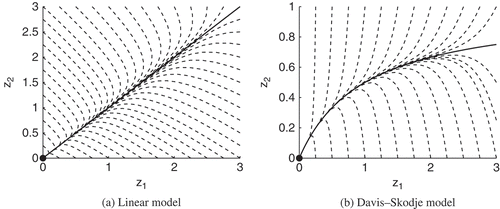Figures & data
Figure 1. Solutions z1(tf = 0; t0) of the boundary value formulation (27) applied to the linear model (1) with γ = 0.2 visualized by the rhombi in comparison with the analytical error (33) (dashed line) as a function of t0.
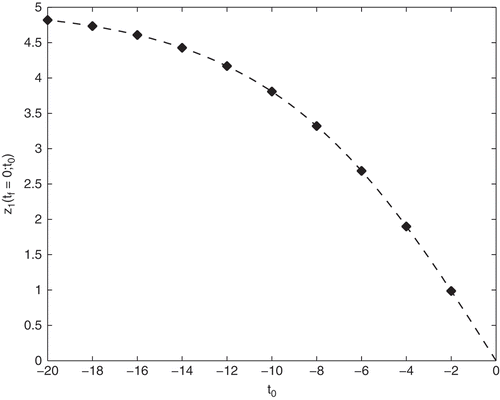
Figure 2. Solutions z1(tf = 0; t0) of the boundary value problem (27) applied to the linear model (1) with γ = 2.0 visualized by the rhombi in comparison with the analytical error (33) (dashed line) as a function of t0.
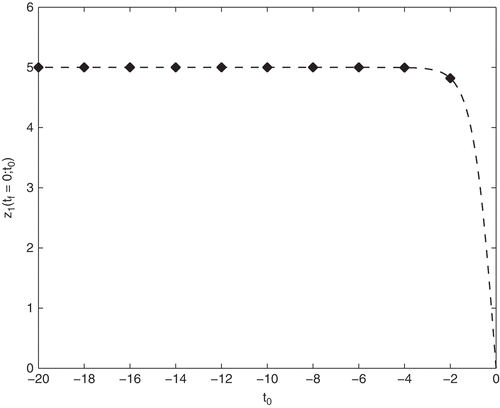
Figure 3. Solutions z2(tf = 0; Z0) of the boundary value formulation (27) applied to the Davis–Skodje test problem (2) with γ = 1.2 visualized by the rhombi in comparison with the analytical error (39) (dashed line) as a function of t0.
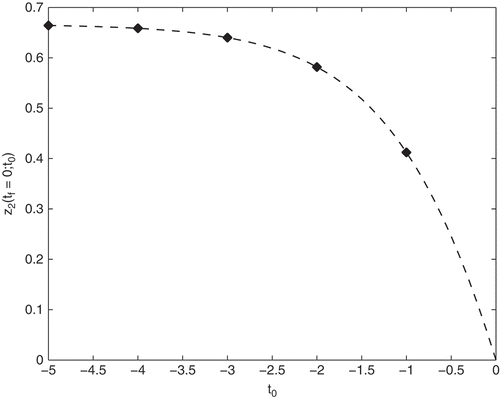
Figure 4. Solutions z2(tf = 0; t0) of the boundary value formulation (27) applied to the Davis–Skodje test problem (2) with γ = 3.0 visualized by the rhombi in comparison with the analytical error (39) (dashed line) as a function of t0.
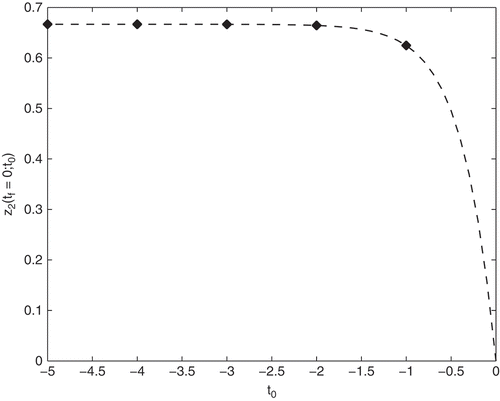
Figure 5. POIs (crosses) resulting from optimization problem (49) applied to a simplified six species mechanism (see [Citation45]) with z(H2O) as RPV fixed at 80 different values between and
. As can be seen, the POIs form an invariant manifold attracting several reaction trajectories (dashed curves) starting from arbitrarily chosen initial values.
![Figure 5. POIs (crosses) resulting from optimization problem (49) applied to a simplified six species mechanism (see [Citation45]) with z(H2O) as RPV fixed at 80 different values between zjtf=10−4 and zjtf=4.0. As can be seen, the POIs form an invariant manifold attracting several reaction trajectories (dashed curves) starting from arbitrarily chosen initial values.](/cms/asset/a0c05f49-542b-48fb-894b-c3198eb401dd/nmcm_a_1141219_f0005_b.gif)
Figure 6. Visual demonstration why a reverse mode formulation works more accurately than the corresponding local method. A polyhedron restricts the feasible area with the consequence that t0 can only be chosen as small as possible within the feasibility constraints.

Figure 7. The black dots represent the equilibrium point, the solid curves the SIM and the dashed curves are solution trajectories concerning the underlying model equations. (a) Linear model. (b) Davis–Skodje model.
